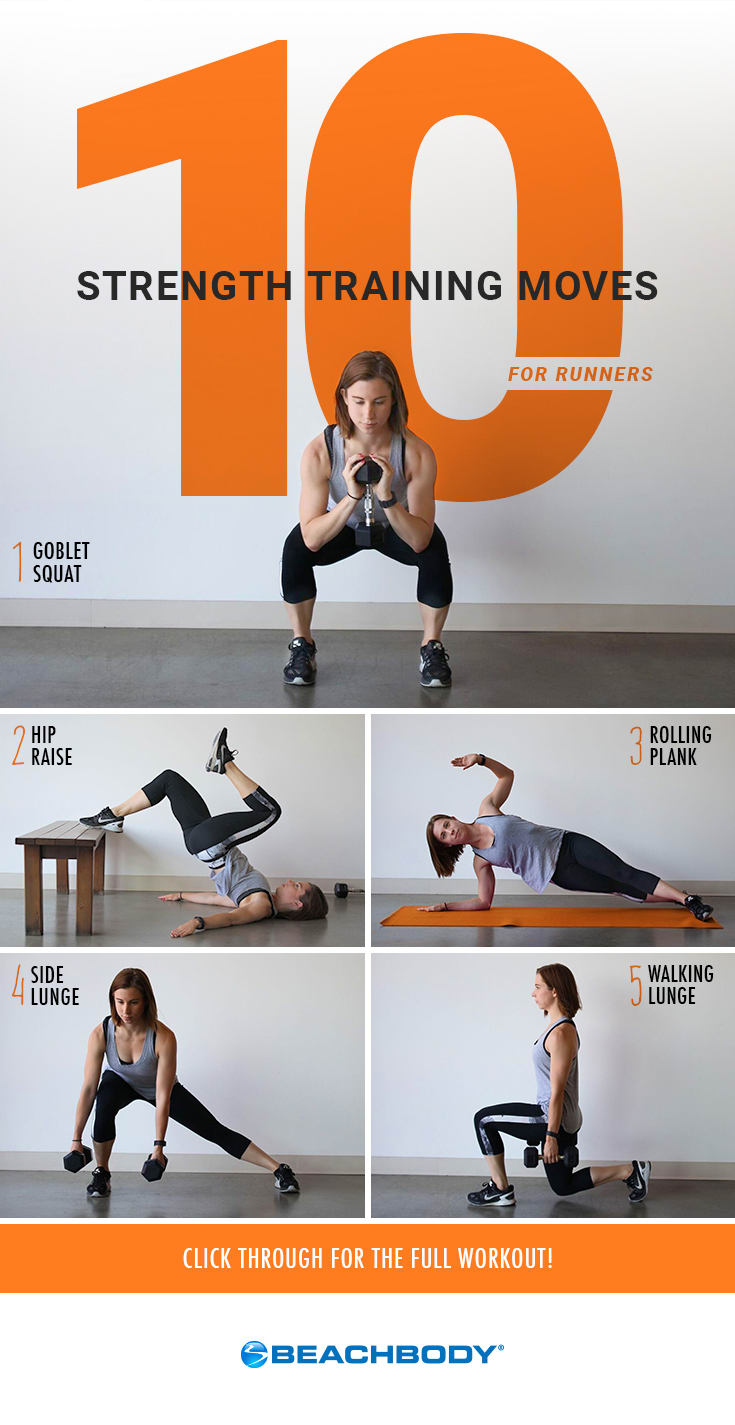10 Strength Training Moves for Endurance Athletes
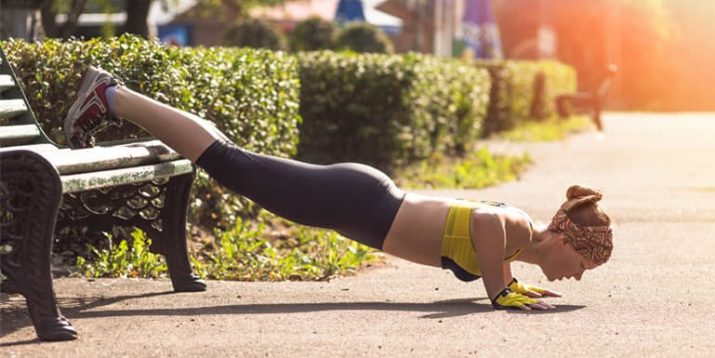
Every sport has its outliers, but if you run, cycle, or participate in any other endurance activity, odds are you have an aversion to strength training. Perhaps it’s because you don’t want to “bulk up” and have to carry around the extra weight. Or maybe you think that time spent lifting is time wasted in pursuit of your ultimate goal: Developing greater speed and endurance.
“As a runner or cyclist, it’s smart to question what will give you the best return on your training investment,” says Luke Carlson, an exercise physiologist and CEO of Discover Strength, in Minnesota, who specializes in helping endurance athletes boost performance by overcoming their dislike of iron. “And the answer will always be running or cycling, but that doesn’t mean you should exclude strength training.”
Quite the contrary: If you want to realize your full endurance potential, you need to lift weights.
Why Most Runners Aren’t Lifters
Modern endurance athletes’ seemingly innate aversion to strength training dates back almost 40 years to the release of two seminal works: Pumping Iron (a 1977 bodybuilding docudrama featuring Arnold Schwarzenegger) and The Complete Book of Running (released later that same year), which not only helped legitimize distance running as a sport, but also quickly became its bible.
“The consequence of these two works coming out at nearly the same time was that people became locked into this mindset that strength training is solely for building muscle and running is primarily for being healthy,” says Carlson. “So early on — right as running started to gain momentum and increase in popularity — this dogma set in, and runners started thinking that strength training wasn’t for them.”
The Benefits of Pumping Iron
For many runners — indeed, for many endurance athletes in general — that anti-lifting dogma persists, which is unfortunate considering all of the potential benefits of strength training. For starters, it can increase not only running speed, running economy, and power output, but also time to exhaustion, according to a review in the Scandinavian Journal of Medicine and Science in Sports. That resistance to fatigue is greatest in the last leg of a race, coming in particularly handy in the final sprint, report scientists in a recent study in the European Journal of Applied Physiology.
Some studies even suggest strength training promotes modest improvements in VO2 max — a measurement of the body’s capacity to perform aerobic work. But perhaps the most powerful benefit of strength training for endurance athletes is its injury prevention potential. According to a meta-analysis in the British Journal of Sports Medicine, strength training can reduce sports injuries by a third, and cut overuse injuries in half.
“The injury prevention benefit is massive for runners, who have an especially high injury rate compared to other athletes — even at the elite level,” says Carlson. As evidence, he points to the last Olympic marathon, in which only half of the United States team (three out of six athletes) crossed the finish line. “And on this point the research is unequivocal: If you’re an endurance athlete, and you strength train, you will suffer fewer injuries,” he says, explaining that it not only builds muscle, but also reinforces bones and connective tissues. “And if you suffer fewer injuries, you will train more consistently, which will improve performance.”
How Much Strength Training Should You Do?
If you’re an endurance athlete, strength training is a winning proposition any way you look at it, especially when you consider the comparatively little strength training you need to do to realize its benefits. “Two workouts a week is best, but one per week is more than enough [and a good place to start],” says Carlson. “Plus, the ideal strength workout for a runner looks nothing like what you might expect for a bodybuilder.”
You don’t need to lift super heavy. You don’t need to do three or four (or even two) sets of each exercise. And you shouldn’t max out at 10 reps per set. “But neither should you lift like a typical runner,” says Carlson, referring to the tendency of endurance athletes to focus exclusively on their legs and glutes. “Strengthening your core, chest, shoulders, arms, and back is essential, because so much of the mechanics of running involves the upper body.”
His recommendation: Once a week, replace one of your runs or rides with a strength workout. “Include four or five moves for your lower body, three or four moves for your upper body, and one or two moves for your core,” says Carlson. “Intensity is key here — really push yourself on every single exercise.”
The Endurance Athlete’s Strength Workout
Perform one set of 16 reps of each of the following 10 exercises in the order shown. Rest 30 to 90 seconds between exercises, depending on your fitness level. Want to include more strength training in your fitness plan? Check out BODi for tons of workouts and exercise programs that are perfect for any kind of athlete.
1. Goblet squat
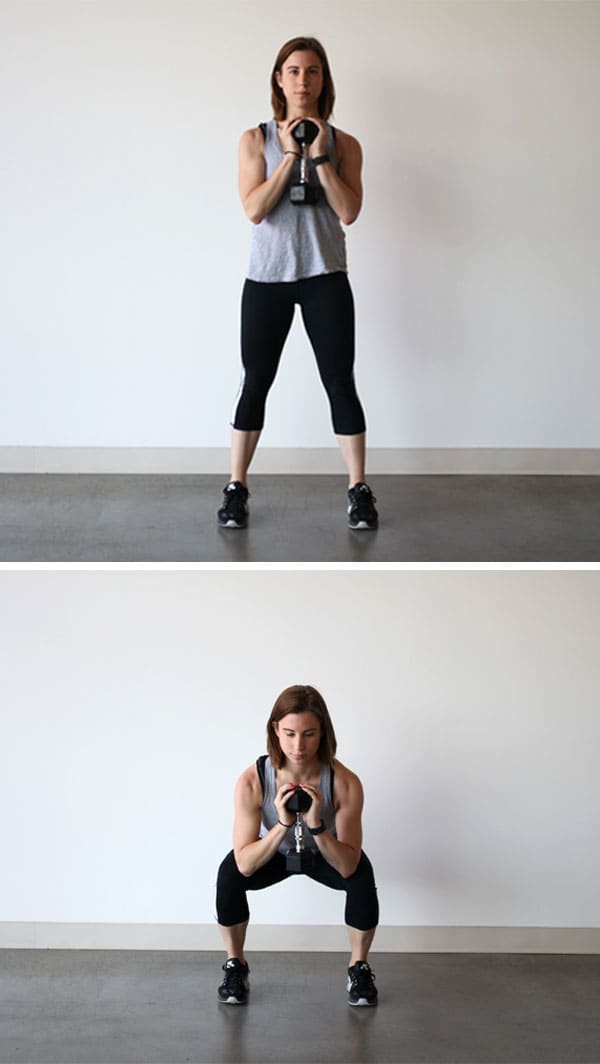
- Stand with your feet shoulder-width apart and hold a dumbbell vertically next to your chest, cupping one end in both hands.
- Lower your body as far as you can by pushing your hips back and bending your knees. Your elbows should graze the insides of your knees. Press out against your knees with your elbows.
- Pause, and then slowly push yourself back up to the starting position.
2. Single-leg foot-elevated hip raise
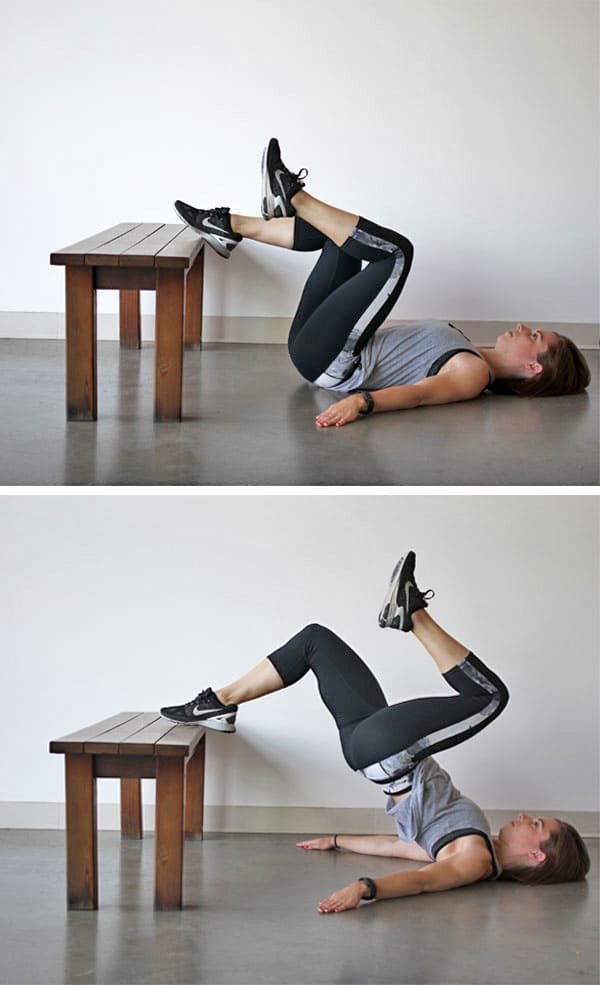
- Lie face-up on the floor with your arms by your sides, your left foot on a box, step, bench, or other immobile object, and your right knee pulled toward your chest.
- Push with your left foot as you raise your hips until your body forms a straight line from your left knee to your shoulders.
- Pause, then return to the starting position. Do 8 reps, switch legs, and repeat.
3. Walking lunge
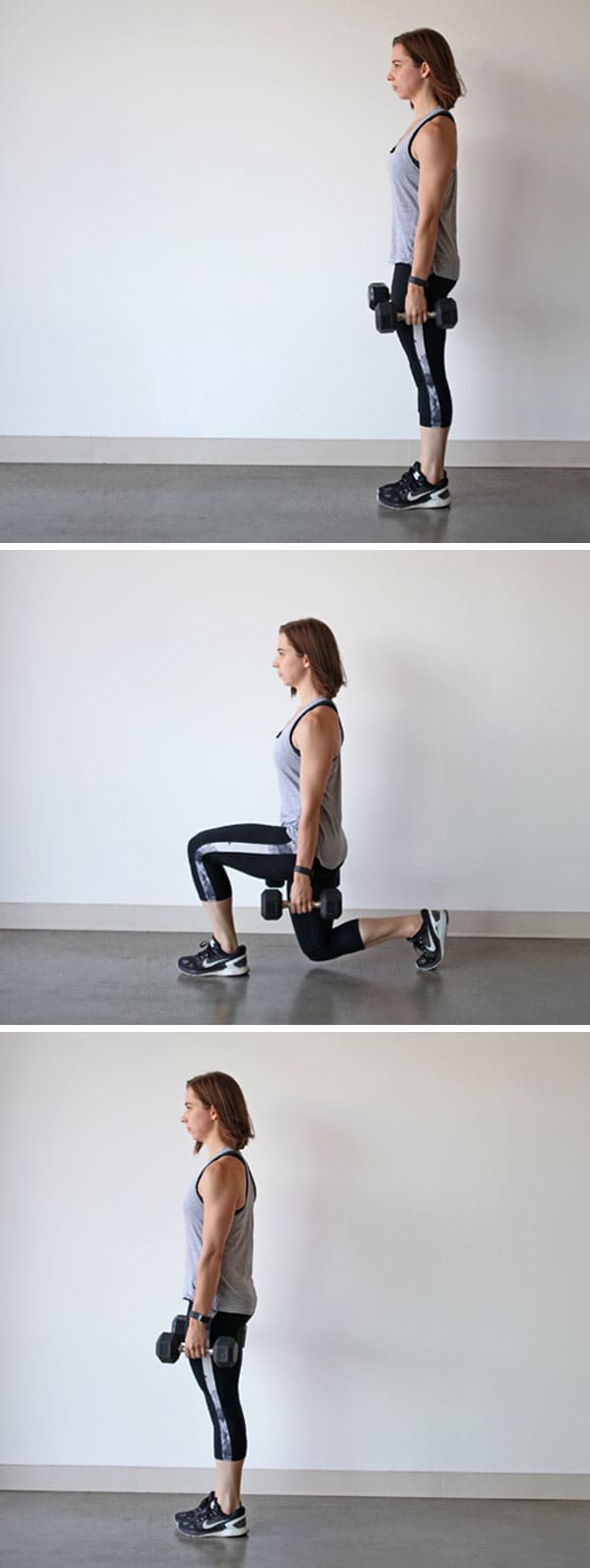
- Stand tall holding a pair of dumbbells at arms length by your sides.
- Take a large step forward with your left leg, and then lower your body until your front knee is bent 90 degrees.
- Push off with your right foot to return to a standing position.
- Repeat, this time stepping forward with your right leg. Continue alternating legs each rep.
4. Standing single-leg calf raise
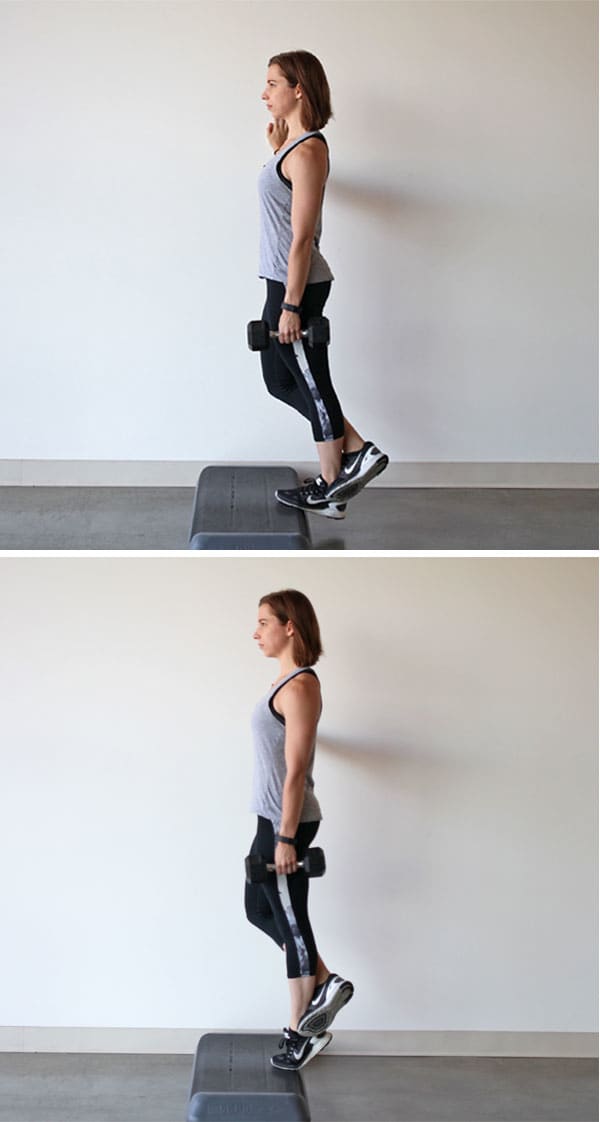
- Grab a dumbbell in your right hand and stand on a step, holding onto a wall or other stable structure for support. Cross your left foot behind your right ankle, balancing on the ball of your right foot.
- Raise your right heel, and then return to the starting position.
- Perform 8 reps, switch sides, and repeat.
5. Lateral lunge
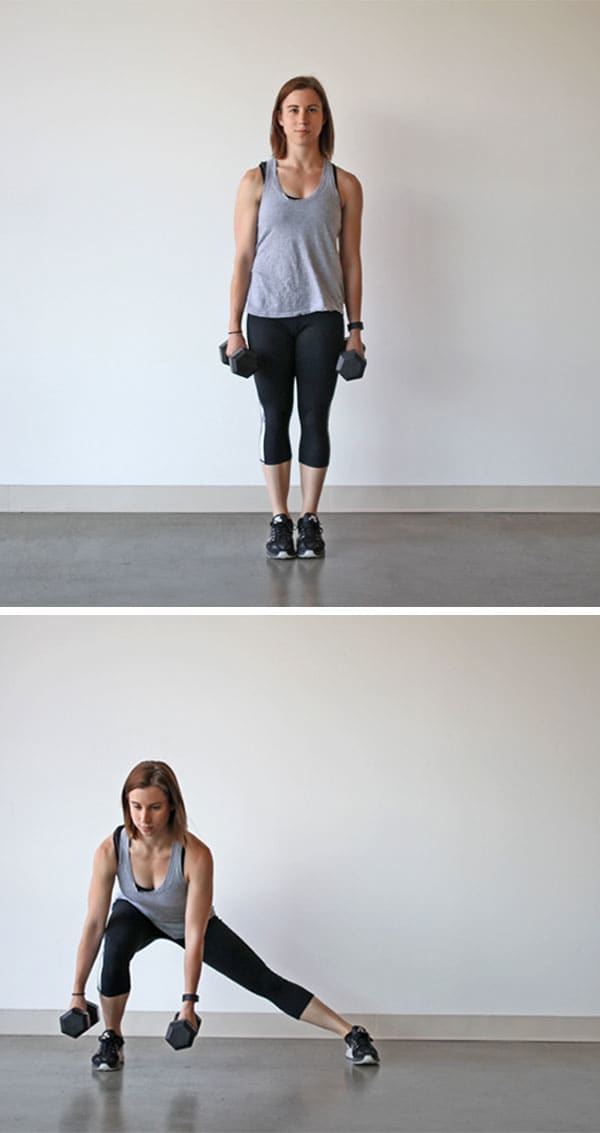
- Stand tall with your feet hip width apart, holding a pair of dumbbells at arm’s length next to your sides.
- Keeping your back flat, lift your right foot and take a large step to your right as you push your hips backward and lower your body by dropping your hips and bending your knees. The dumbbells should come to within a few inches of the floor.
- Push yourself back up to the starting position, and repeat.
6. Dead stop push-up
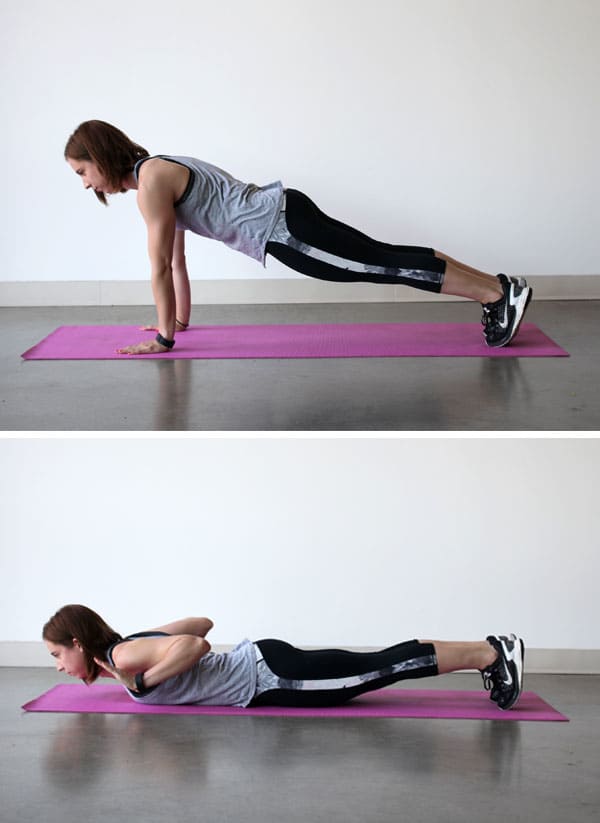
- Assume a push-up position with your feet together, your body straight, and your hands below but slightly wider than your shoulders.
- Lower your body to the floor.
- Lift your hands off the floor, pause, and then place them back on the floor and push up forcefully.
7. Bent-over row
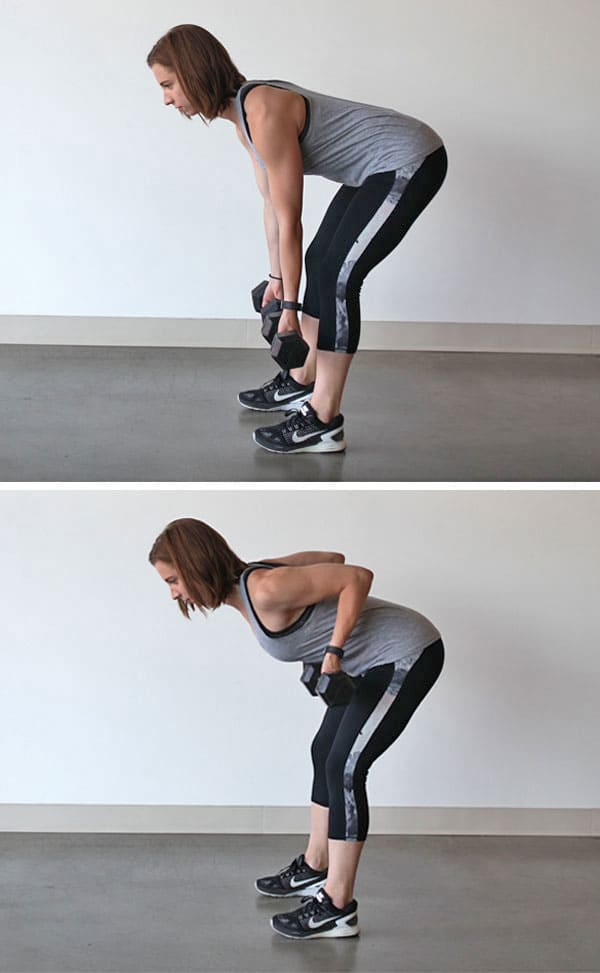
- Hold a pair of dumbbells with an underhand grip and stand with your legs hip-width apart and your knees slightly bent.
- Keeping your back flat, push your hips back and lower your torso until it’s almost parallel to the floor. Let the weights hang at arms length toward the floor. This is the starting position.
- Keeping your elbows tucked, pull the weights to the sides of your torso, squeezing your shoulder blades together.
- Pause, then return to the starting position.
8. Overhead press
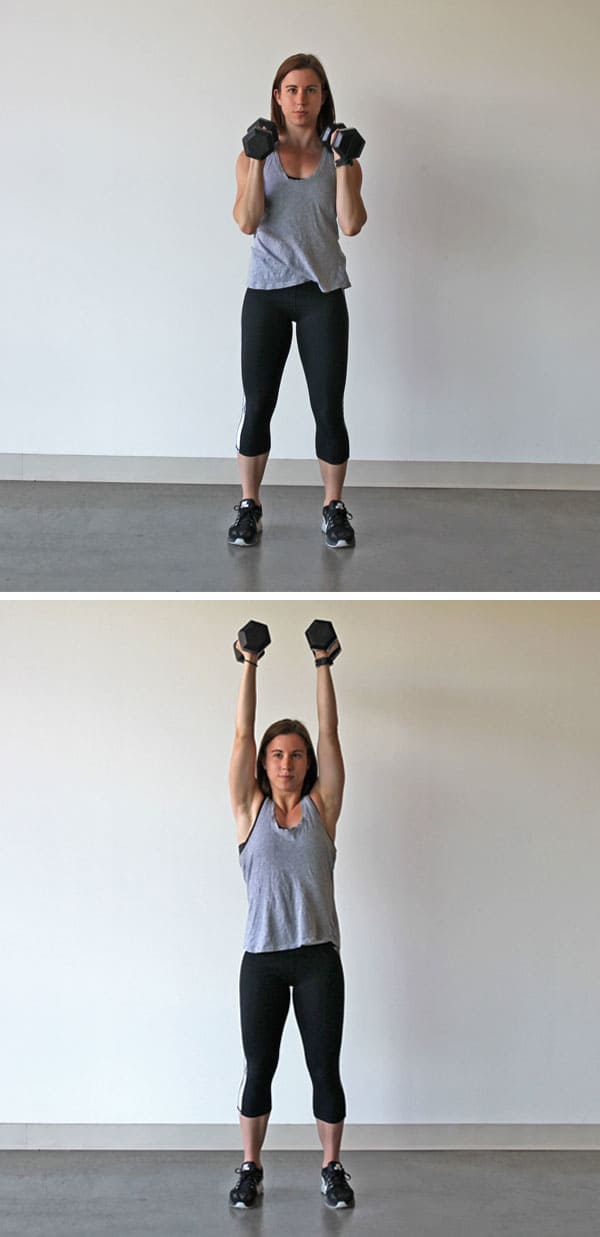
- Stand holding a pair of dumbbells just outside your shoulders with your arms bent, elbows tucked, and palms facing each other. Set your feet shoulder-width apart and keep your knees slightly bent.
- Press the weights directly above your shoulders until your arms are completely straight.
- Pause, then lower the dumbbells back to the starting position.
9. Windshield wiper
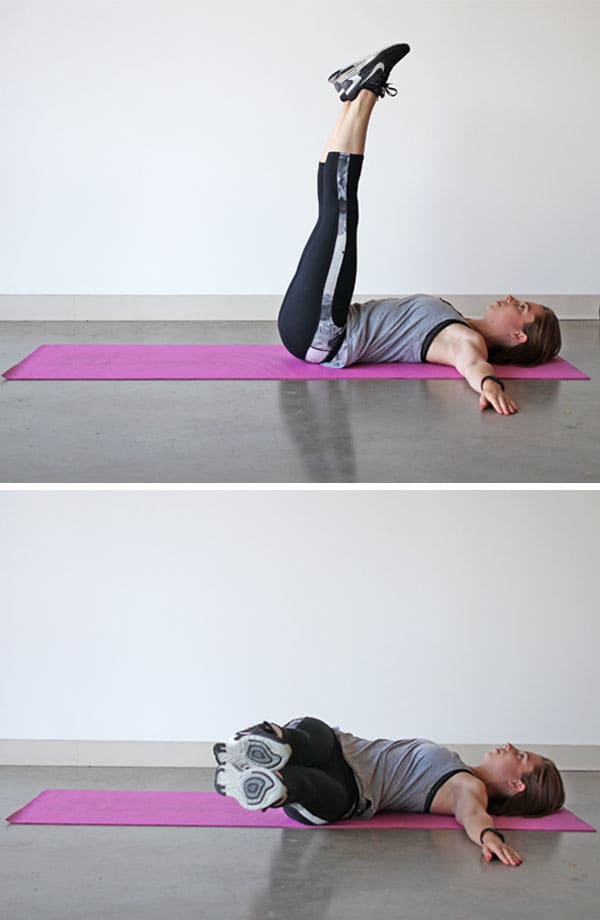
- Lie face-up on the floor with your arms straight out to your sides.
- Lift your legs off the ground so they form a right angle with the rest of your body. This is the starting position.
- Slowly lower your legs to your left, going as low as you can under control.
- Reverse the movement to return to the starting position.
- Repeat, this time lowering your legs to your right. Continue alternating sides each rep.
10. Rolling plank
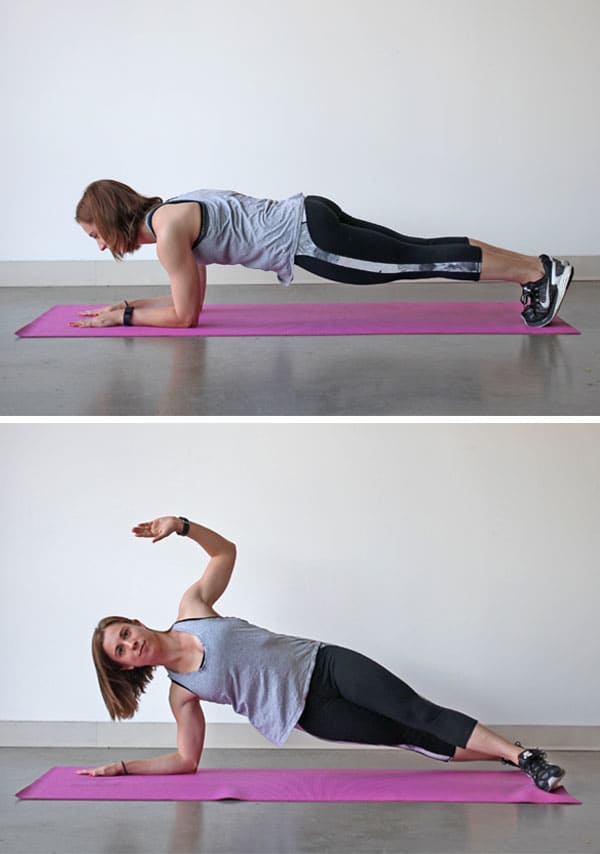
- Assume a pushup position, but rest your weight on your forearms instead of your hands.
- Lift your right arm and rotate your torso up and to the right.
- Return to the starting position.
- Repeat, this time rotating up to your left. Continue alternating sides each rep.
